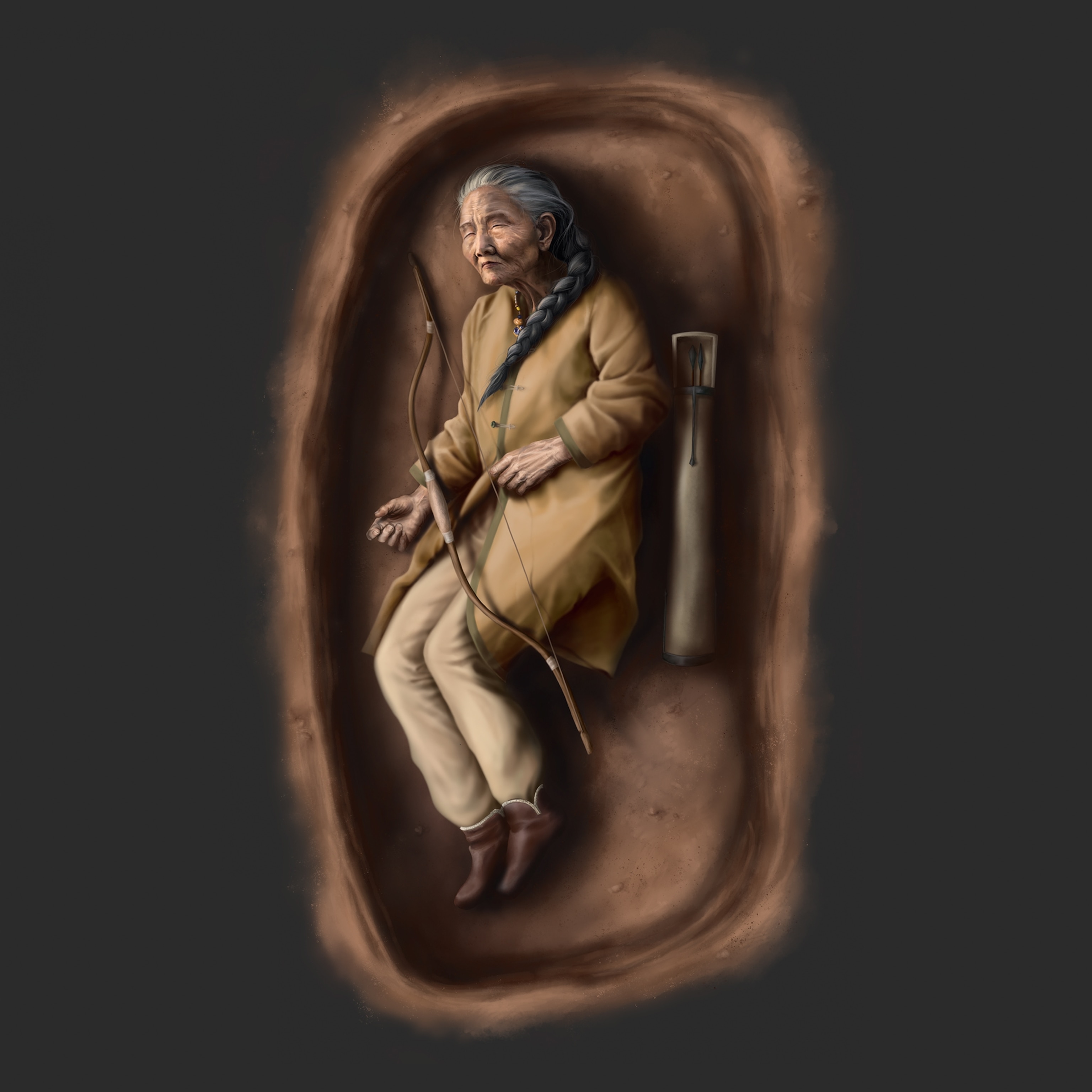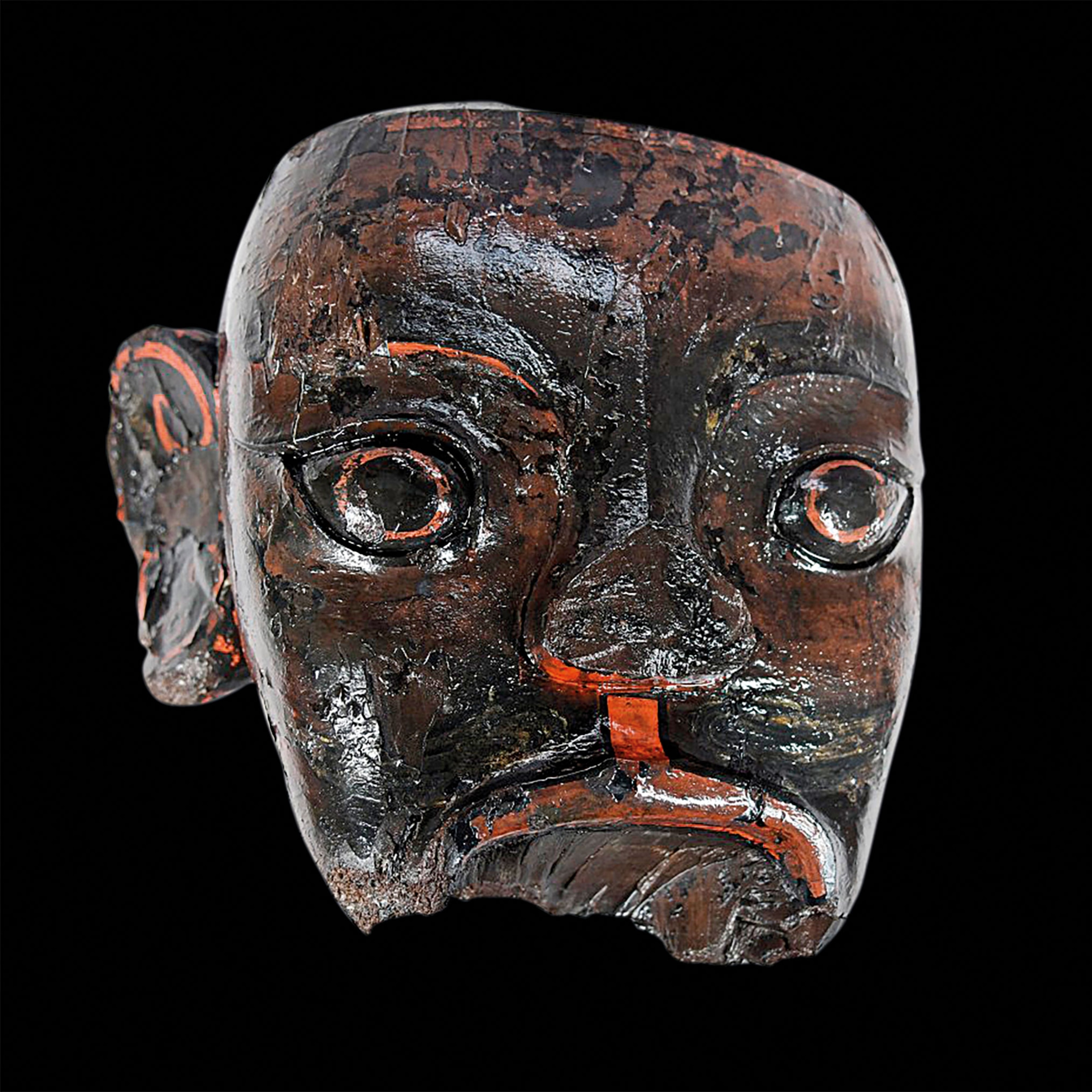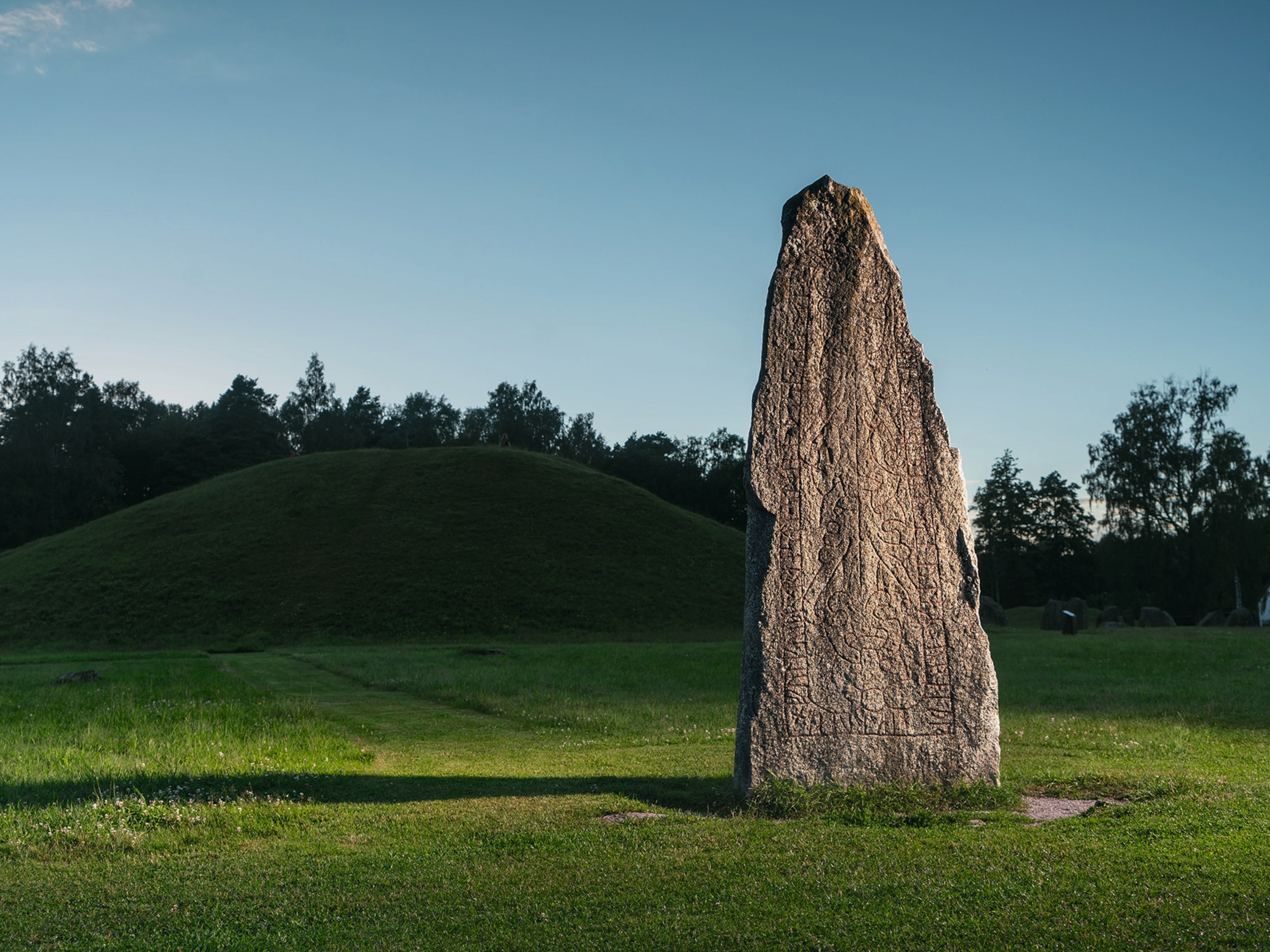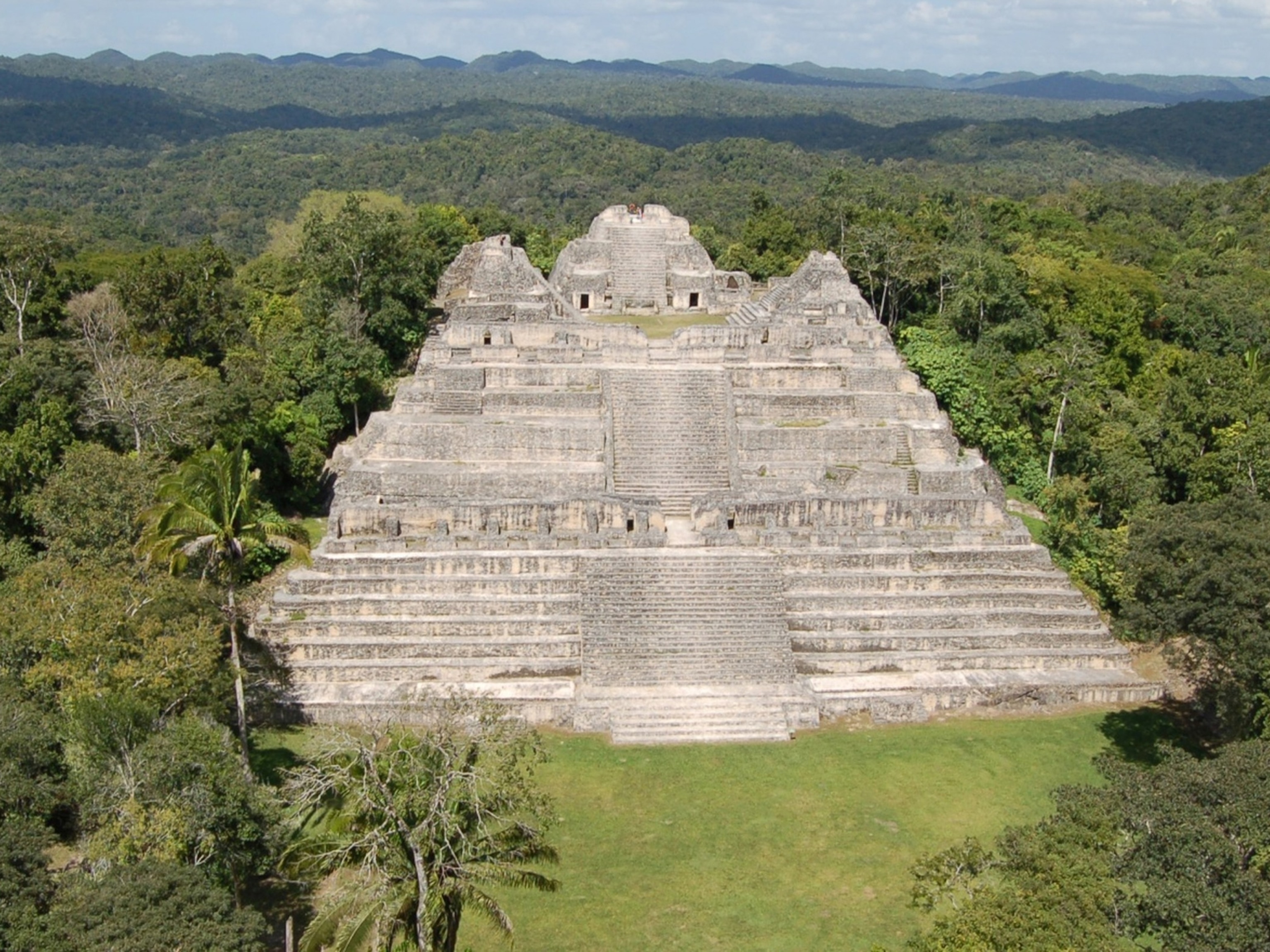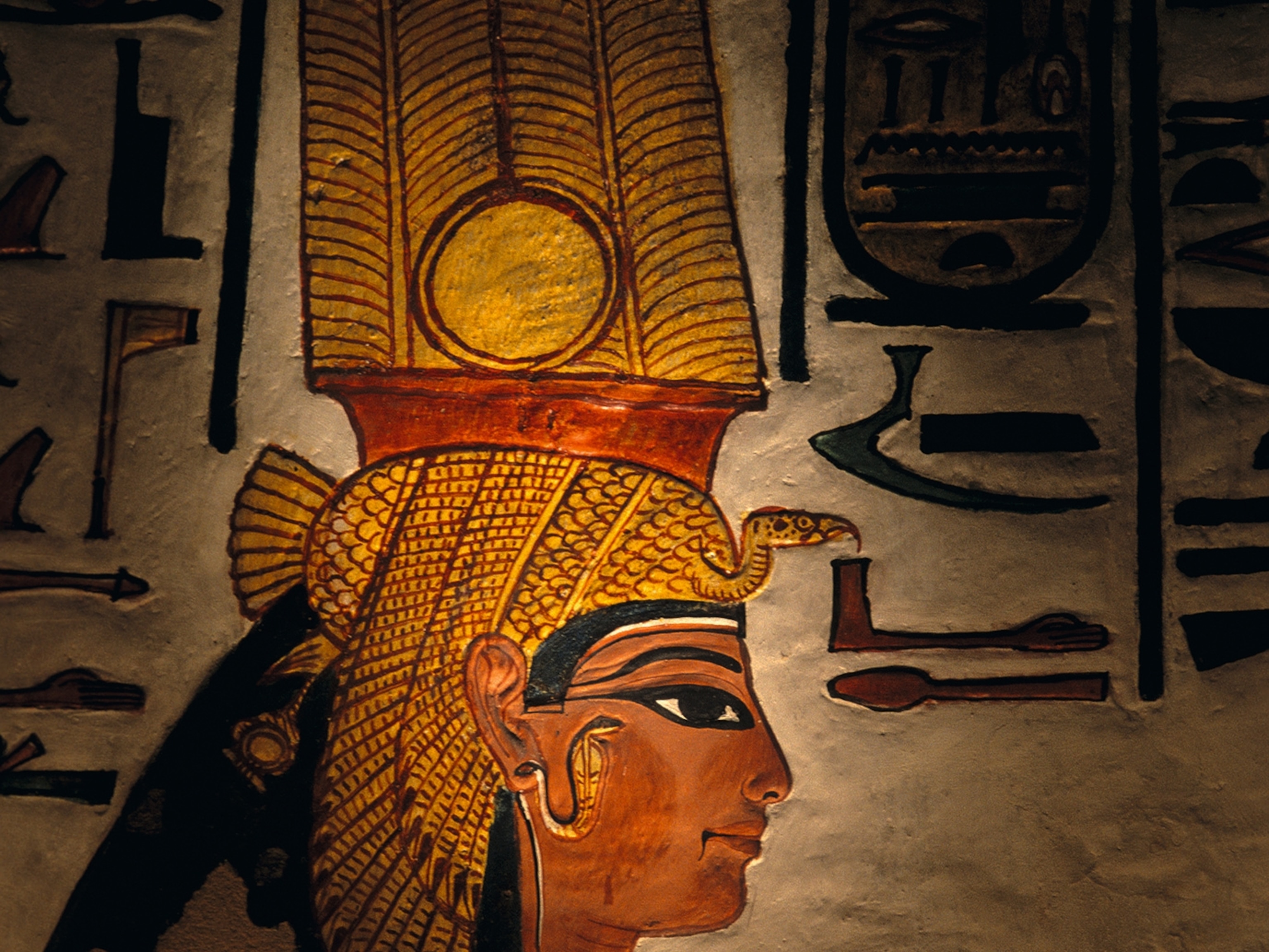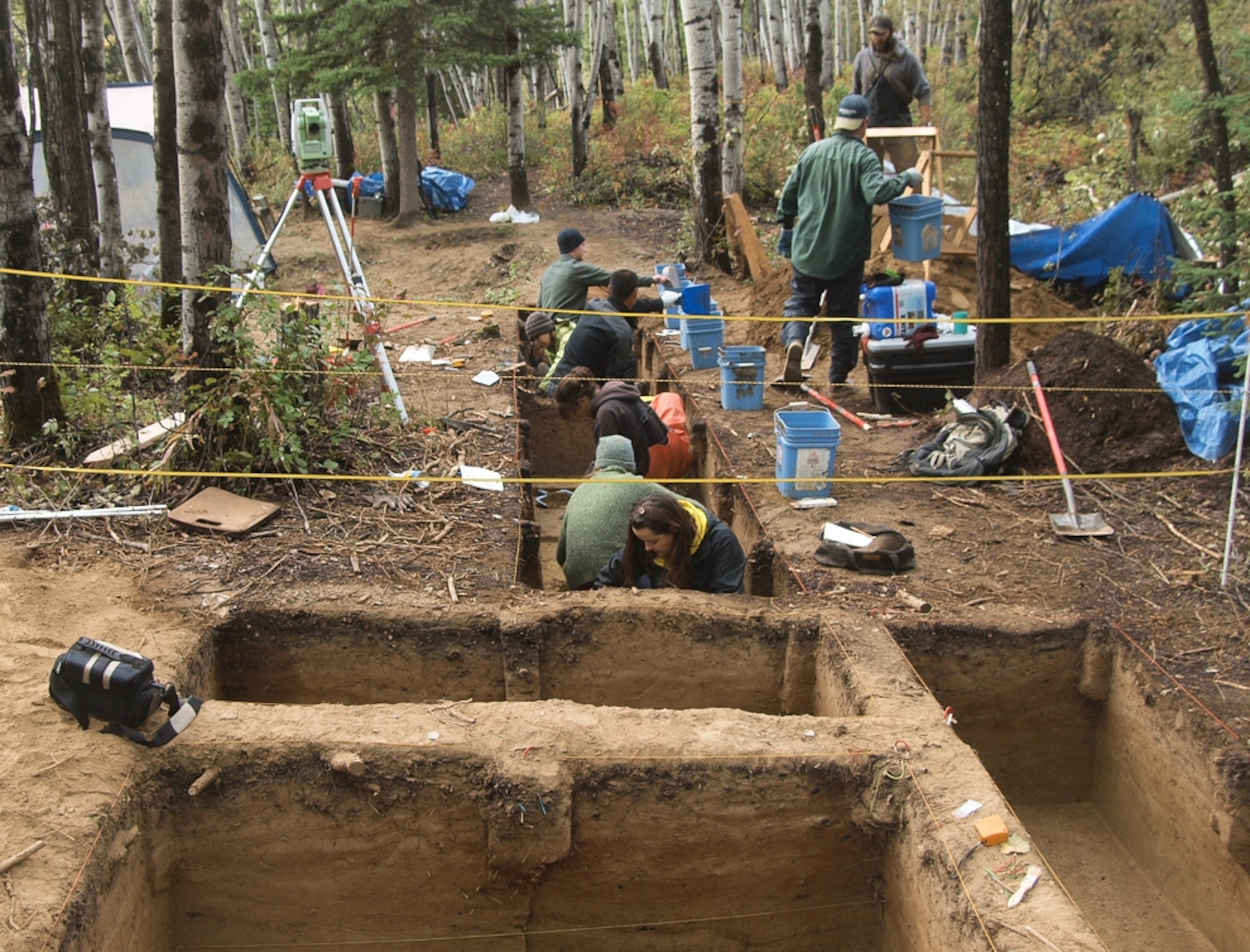
Ice Age Child Found in Prehistoric Alaskan Home
Cremation site hints at how first Americans lived—and where they came from.
In what's now central Alaska, one of the first Americans—only three years old at the time—was laid to rest in a pit inside his or her house 11,500 years ago, a new excavation reveals.
The ancient home site and human remains—the oldest known in subarctic North America—provide an unprecedented glimpse into the daily lives of Ice Age Americans, scientists say.
What's more, if the remains yield usable DNA, the child could help uncover just who was living on the North American side of the land bridge that likely still connected the Americas to Asia at the time, experts added.
One thing that apparently isn't a mystery is how the child was memorialized.
"You can see that the child was laid in the pit—a fire hearth inside the house—and the fire was started on top of the child," study co-author Joel Irish said. Charred wood from the pit allowed scientists to assign a radiocarbon date to the site.
After the cremation, the child's hunter-gatherer clan apparently filled the 18-inch-deep (45-centimeter-deep) hearth with soil and abandoned the dwelling. No other artifacts exist above the fill line.
Even the new find represents only 20 percent of the child's skeleton, offering few clues as to how the child died. But what's left makes it clear that the youngster died before burial and was placed in a position of peaceful repose.
(Related: "Oldest Skeleton in Americas Found in Underwater Cave?")
Daily Life in Ice Age Alaska
"From our perspective, the child is certainly extraordinary, but the house is also unique," said study co-author Ben Potter.
Remains of salmon, ptarmigan, ground squirrels, and other animals suggest the hearth was in use for weeks or months before it was turned into a grave, the study says.
The dwelling's floor had been dug about 11 inches (27 centimeters) into the ground. Poles may have supported walls and a roof, according to telltale stains in the sediment.
In other words, this was a home—the oldest known in Alaska.
"All of the other finds dating to this period or earlier tend to be associated with either short-term hunting camps, or workshops where people are gathering high-quality stone materials and working them into tools," said Potter, an anthropologist at the University of Alaska Fairbanks.
Anthropologist Ted Goebel, who wasn't involved in the research, agreed. "What's most exciting for me is that we finally seem to hit upon a residence site where it looks like people were actually living."
Something Fishy About Ice Age Cremation Site
Now that an Ice Age Alaskan home has been found, scientists are poised to unlock secrets of how early North Americans lived and behaved, said Goebel, of Texas A&M University's Center for the Study of the First Americans.
It's already clear the residents had a taste for salmon—the remains of about 300 of the fish were found in the pit.
In addition to remains of young ground squirrels, the salmon are among evidence that the house was a summer residence for a seminomadic people. Both animals are abundant in the warmer months.
Previous evidence of dwellings had been associated with temporary camps in areas that would have been frequented in the fall, according to the study, to be published tomorrow in the journal Science.
Located amid boreal forests along the Tanana River (map), the new home site "paints a much broader picture of how these peoples used all the major species in the landscape," said study co-author Potter.
"We picture these people as foragers hunting large game, like bison or elk. But the fishing element is kind of new, and it's kind of striking that there are so many fish."
The apparent seasonal pattern of hunting and fishing, Potter added, is similar to that practiced by later Alaska natives.
Human Remains to Yield DNA?
A local Native Alaskan community, the Healy Lake Tribe, has named the Ice Age child Xaasaa Cheege Ts'eniin, or Upward Sun River Mouth Child, after the native name for the site.
Several native groups are working closely with the archaeologists, and some have expressed interest in comparing their own DNA with that of the child to help paint a clearer picture of the child's ancestry and perhaps of their own.
Already, a preliminary study of the child's teeth suggests he or she is biologically affiliated with both Native Americans and with Northeast Asians.
Though the specifics are hotly debated, it's generally believed that the first Americans migrated across the long-gone Bering Strait land bridge from Siberia about 13,000 years ago.
(See our interactive atlas of ancient human migrations.)
Study co-author Irish, a bioarchaeologist at the University of Alaska Fairbanks, noted that some of the site's stone artifacts, construction style, and animal remains recall those found in today's Siberia.
They're particularly reminiscent, he said, of Siberia's Ushki Lake. At that roughly 14,000-year-old site, excavations have revealed a culture that has some parallels with later Native American cultures. Ushki is also home to the only other known burial site of this era in the vicinity of the Bering land bridge, also called Beringia.
"The Alaskan record looks much more like Siberia or the Russian Far East record than it does anything in the lower 48" U.S. states, study co-author Potter added.
(Also see "Siberian, Native American Languages Linked—A First.")
Texas A&M's Goebel, who's worked at Ushki Lake, said such similarities can be found in many cultures of the ancient north, so he doesn't consider the parallels proof that the two cultures are tied.
DNA could clear up the picture considerably, and the ancient child's remains offer an unprecedented opportunity. (Related: "First Americans Arrived Recently, Settled Pacific Coast, DNA Study Says.")
"We're really interested in using the record from Alaska to define how the first Ice Age humans crossed the Beringia land bridge," Goebel said.
"But with no [human remains] we've never been able to say who those people were, what they looked like, and how they might be related to other populations.
"Now we might be able to get our first real specific look at what an early Beringian looked like, in terms of their genetics."
More: "Footprints Show First Americans Came 25,000 Years Early?"

